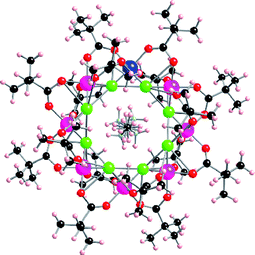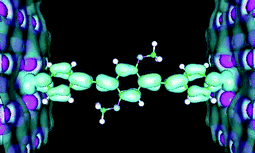Molecular spintronics and quantum computing
Abstract
Molecular spintronics is a new and emergent sub-area of spintronics that can benefit from achievements in molecular electronics and molecular magnetism. This issue highlights the current trends and challenging goals of this area: from the development of molecular analogs of the existing inorganic materials used in the construction of spintronic structures, to the evolution towards single-molecule spintronics. In this last aspect, particular attention is devoted to the possibilities offered by magnetic molecules and single-molecule magnets for future applications in quantum computing.
Spin-based electronics (or spintronics) is one of the emerging branches in today's nanotechnology and the most active area within nanomagnetism. Its central theme is the active manipulation of spin degrees of freedom of charge carriers in solid-state systems, in addition to their electronic charge used in traditional semiconductor electronics. The field has made a major impact on today's daily life, for instance, by improving hard drive information storage and in magnetic sensing. Thus, the fundamental discovery in 1988 of the ‘giant magnetoresistance’ phenomenon allowed IBM to put on the market in 1997 the read-head devices used nowadays for computer disk drives. This phenomenon was found in trilayer sandwich-type nanostructures in which a thin nonmagnetic layer, like chromium, was placed between two ferromagnetic electrodes (spin valves). In 2007 Albert Fert and Peter Grünberg received the Nobel Prize in Physics for this discovery. The range of applications of spintronics is now expanding from read-head devices, to new types of non-volatile magnetic memories (MRAM), to spin transfer nano-oscillators for applications in future wireless telecommunications, to the potential use of an individual electron spin system as a quantum bit in a quantum computer.
However, until now, spintronics has almost been exclusively based on “conventional” inorganic metals and semiconductors. The situation is rapidly evolving and a new field, namely molecular spintronics, is emerging. One of the reasons that justifies the interest in this new area is that it is placed at the crossover of spintronics with molecular electronics and molecular magnetism. In such a privileged situation it can take advantage of the possibilities offered by molecular electronics in materials processing, as well as in the manipulation, measurement and addressing of individual molecules, and by molecular magnetism in increasing control over the chemical design of magnetic molecules and materials with desired properties. Another important reason comes from the chemical, structural and electronic versatility provided by the molecular world. Thus, in organic systems electron spins can be preserved for longer time periods and distances than in conventional inorganic materials. On the other hand, the spin-relaxation times of magnetic molecules can be exceptionally long—between a few milliseconds and seconds. Other advantageous features of molecular systems compared with inorganic conductors and semiconductors are their low-density, flexibility, transparency, processability and novel added functionalities (magnetic switching at the molecular level, emission of light, etc.).
In a similar way to what happens in molecular electronics, molecular spintronics can be divided into two large areas, namely molecule-based spintronics (or molecular spintronicssensu lato) and unimolecular spintronics (or molecular spintronicssensu stricto). The first focuses on the design and study of new molecule-based materials that can mimic the properties of, or exhibit superior properties than, the existing (spin)-electronic materials/structures/devices. The second focuses on the study of the conductivity through a single molecule, in particular the spin-dependent transport, and on the use of these individual molecules as active components of spintronic devices. The former area opens the possibility to design cheaper spintronic devices compatible with plastic technology, while the second takes advantage of the possibility to chemically tailor molecules with control down to the single spin. In both areas molecular spintronics is only in its infancy and a lot of basic science is still required in order to see real applications. This assessment is particularly true in unimolecular spintronics, for which very few experiments on transport through magnetic molecules have been reported so far. In this context quantum computing appears as one promising area in which magnetic molecules can be used as q-bits. The possible advantages of using molecules in quantum computing are the long quantum-coherence times they exhibit compared with semiconducting materials, and the possibility of scalability. Still, the experimental realizations of these expectations remain a challenge.
In this themed issue the major achievements, current trends and challenging goals in molecular spintronics and quantum computing using magnetic molecules are highlighted. As this issue is aimed at a chemical community interested in materials science, the contributors, physicists for the most part, have made the effort of writing general feature articles in which the basic physical principles of spintronics and quantum computing are explained in a pedagogical and accessible way for a chemist. Such a physical background is combined with many examples of magnetic molecules and molecule-based materials, which may be of interest in these new areas.
We would like to thank the authors of this themed issue for their efforts in presenting high-quality contributions. We expect they will stimulate and inspire future work in these areas. We also wish to thank all the staff members of the RSC for their kind assistance, patience and dedication to this themed issue, in particular Sophia Anderton and Carol Stanier, and the entire Informatics team.
 | ||
| Plate1 Eugenio Coronado | ||
 | ||
| Plate2 Arthur J. Epsetin | ||
| This journal is © The Royal Society of Chemistry 2009 |


